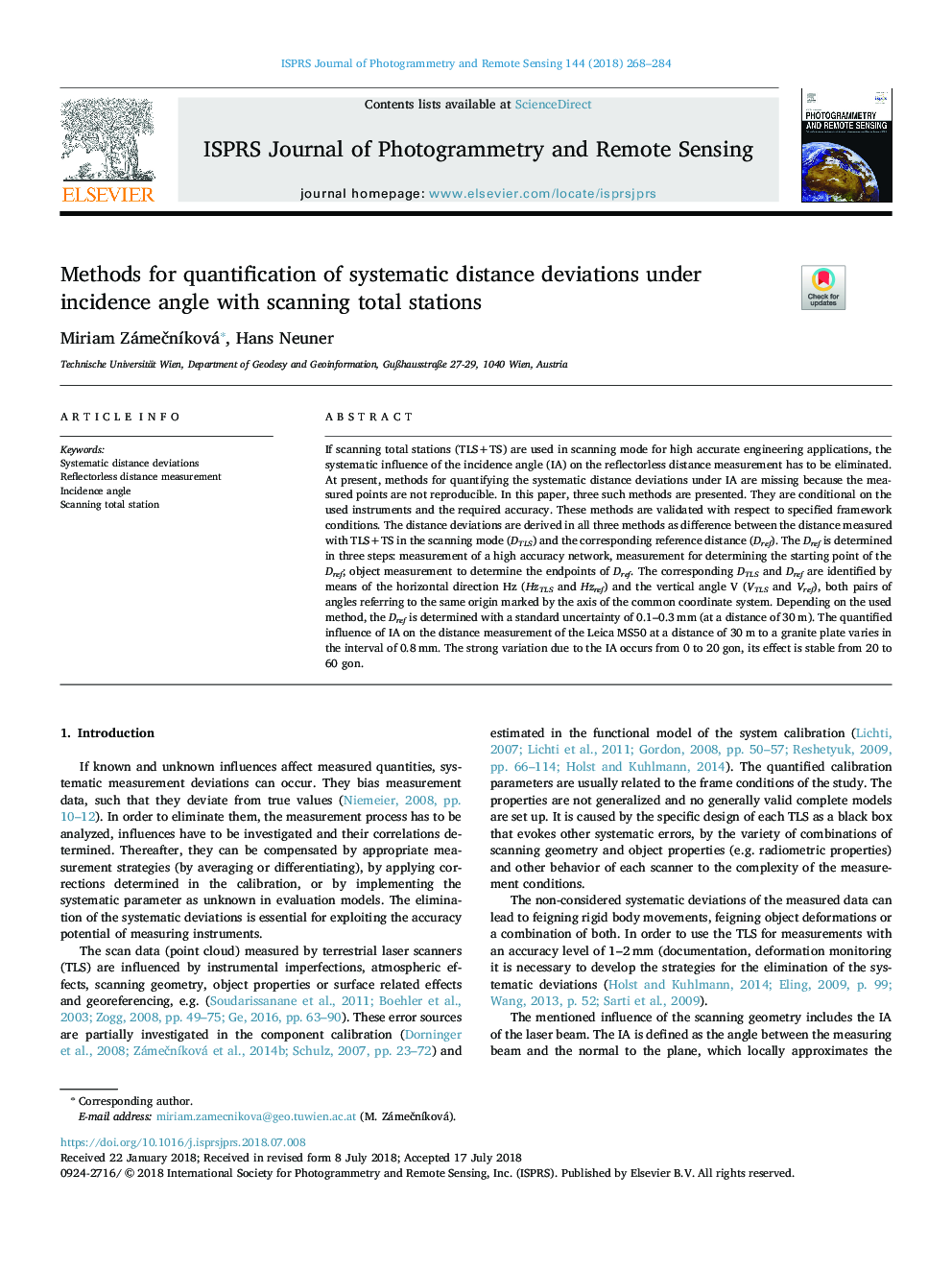| Article ID | Journal | Published Year | Pages | File Type |
|---|---|---|---|---|
| 6949035 | ISPRS Journal of Photogrammetry and Remote Sensing | 2018 | 17 Pages |
Abstract
If scanning total stations (TLS+TS) are used in scanning mode for high accurate engineering applications, the systematic influence of the incidence angle (IA) on the reflectorless distance measurement has to be eliminated. At present, methods for quantifying the systematic distance deviations under IA are missing because the measured points are not reproducible. In this paper, three such methods are presented. They are conditional on the used instruments and the required accuracy. These methods are validated with respect to specified framework conditions. The distance deviations are derived in all three methods as difference between the distance measured with TLS+TS in the scanning mode (DTLS) and the corresponding reference distance (Dref). The Dref is determined in three steps: measurement of a high accuracy network, measurement for determining the starting point of the Dref; object measurement to determine the endpoints of Dref. The corresponding DTLS and Dref are identified by means of the horizontal direction Hz (HzTLS and Hzref) and the vertical angle V (VTLS and Vref), both pairs of angles referring to the same origin marked by the axis of the common coordinate system. Depending on the used method, the Dref is determined with a standard uncertainty of 0.1-0.3â¯mm (at a distance of 30â¯m). The quantified influence of IA on the distance measurement of the Leica MS50 at a distance of 30â¯m to a granite plate varies in the interval of 0.8â¯mm. The strong variation due to the IA occurs from 0 to 20 gon, its effect is stable from 20 to 60 gon.
Keywords
Related Topics
Physical Sciences and Engineering
Computer Science
Information Systems
Authors
Miriam ZámeÄnÃková, Hans Neuner,
